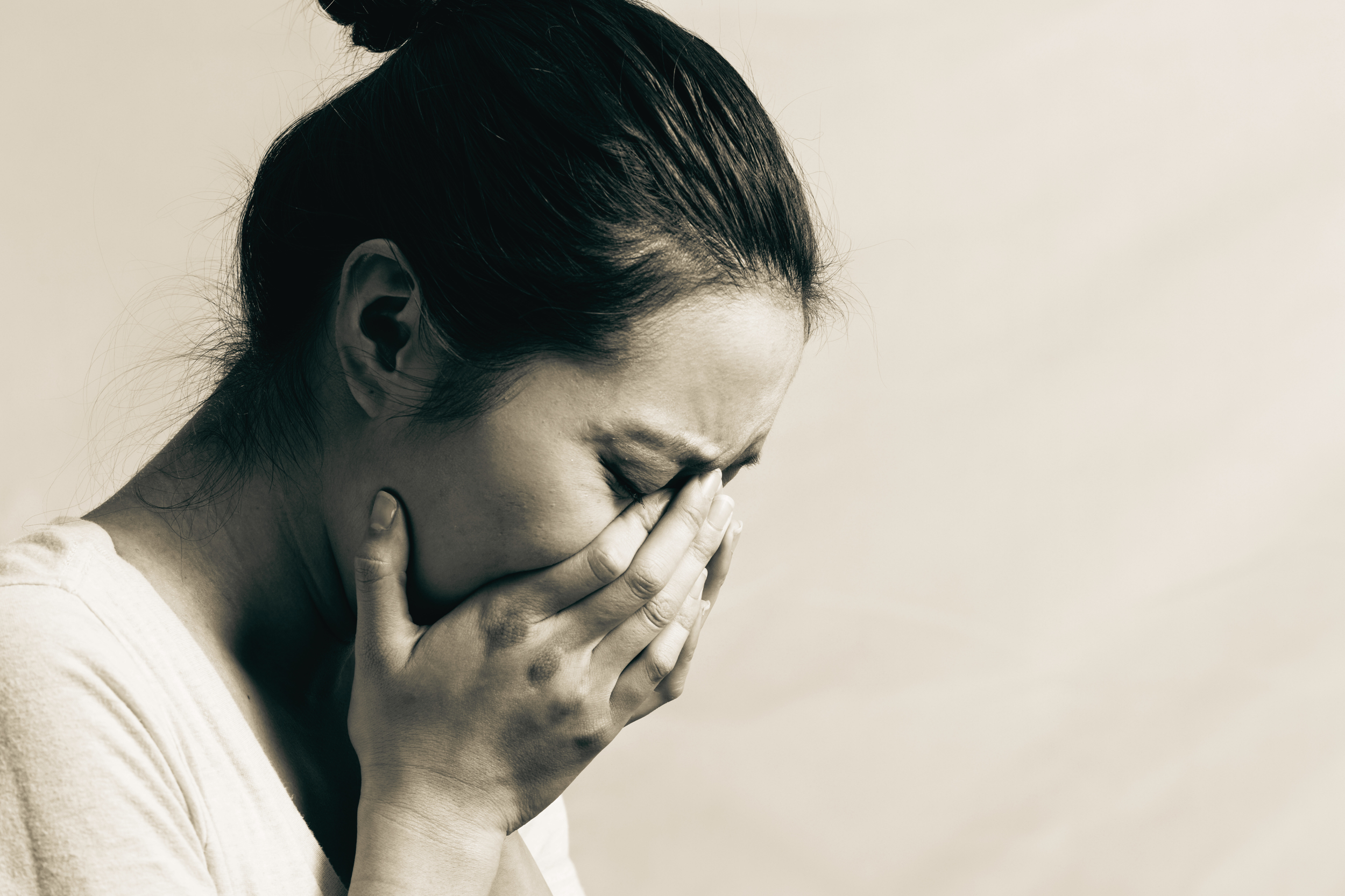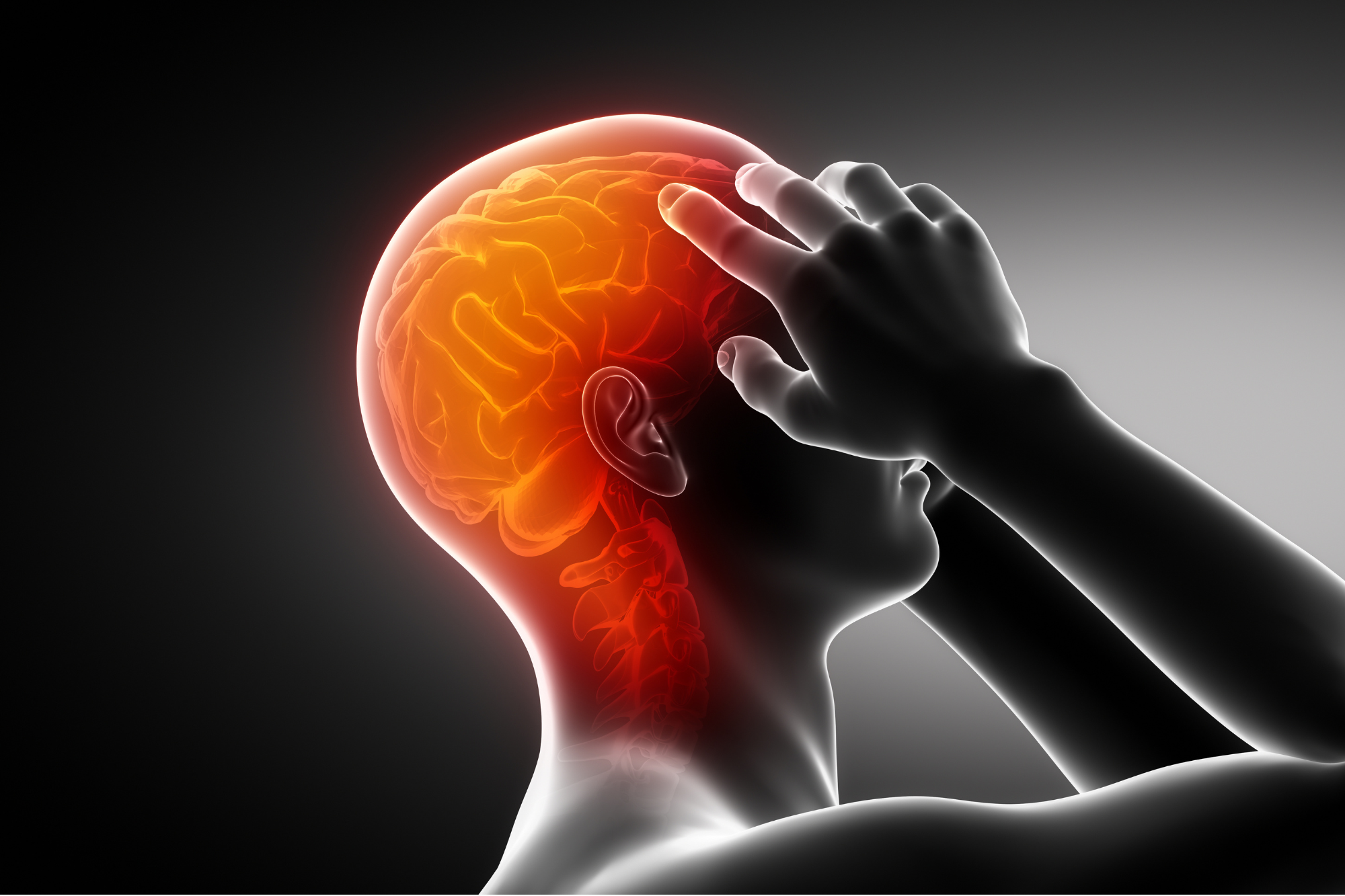Anorexia’s Grip on the Mind & Body
Anorexia nervosa, more commonly known as anorexia, is an eating disorder marked by significantly low body weight, an extreme fear of weight gain, and a distorted perception of one’s body weight.[1] There are two main subtypes of anorexia: the first includes a restricted diet with extensive weight loss and lack of energy intake, while the second includes binge-purge eating behaviors where the person will combine episodes of excessive eating and self-induced vomiting. Nevertheless, both subtypes are driven by the individual’s motivation to control their weight and shape.[2,3]
Due to the drastically decreased intake of nutrients of those with anorexia people suffering from the eating disorder can experience a wide range of physical, emotional, and behavioral symptoms including:[4]
An unrealistic perception of body image or weight
Fear of becoming fat
Thin appearance
Frequently skipping meals
Irritability
Social withdrawal
Abnormal blood count
Dry and/or yellowing skin
Fatigue
Eroding teeth from vomiting
Excessive exercise
Frequently checking mirrors or reflections for perceived flaws
In recent years, research on the biological causes of anorexia has sharply increased. Researchers have begun focusing on possible genetic factors that may explain why certain individuals are at higher risk for developing anorexia than others. Additionally, certain personality characteristics have been linked to the development of anorexia including those that exhibit obsessive-compulsive tendencies, or those suffering from additional mental illnesses, such as anxiety or depression.[5,6] While males also suffer from anorexia, young girls are increasingly at risk of becoming anorexic due to the emphasis on thinness being equated to beauty, especially within Western culture.[7]
Physiological Effects
Anorexia can have considerable effects on the human body, and may even become fatal. The major concern for those struggling with this eating disorder is the effects it has on the cardiovascular system, as heart damage is the most common reason for hospitalization in those with anorexia.[8] Moreover, for those suffering from the subtype of anorexia that includes purging, there is a greater risk of depleting the body of electrolytes which are essential in muscle contractions, notably the heartbeat.[9,10] With the restricted consumption of calories, the body is forced to break down its own tissue as fuel, with muscles being some of the first organs to go once fat has already been utilized. The heart also receives less energy leading to a drop in pulse and blood pressure from the lack of expendable energy. Hence there is a major risk for heart failure and mitral valve prolapse, a heart disease that affects the efficacy of the valve between the left heart chambers.[11]
Another system that comes under concern is the gastrointestinal (GI) tract, especially concerning purging (i.e., forced vomiting or bowel movements). When an individual purges, it can interfere with the normal functioning of the stomach; the constant vomiting can lead to stomach pain and bloating, block the intestines from masses of undigested foods, and lead to nausea, thus perpetuating the feeling of needing to vomit.[12] Additionally, the stomach and esophagus can become worn down by the acid within the stomach, and in some cases rupture. The additional use of laxatives can also cause the individual to be constipated as the long-term restriction of food causes their body to no longer be able to digest food properly. It can also cause the body to become dependent on laxatives to have normal bowel movements.[13]
Many women will lose their menstrual cycle during severe cases of anorexia; this loss is due to the decrease in thyroid hormones that can both stop a woman’s cycle but also lead to bone loss, and a reduction in resting metabolic rate.[14,15] Furthermore, the effects of starvation can lead to high cholesterol levels and a drop in body temperature due to a lack of energy. Malnutrition can also decrease infection-fighting white blood cells making the individual more prone to sickness.[16] These combined factors have led eating disorders to be categorized as one of the deadliest disorders that currently exist.
Neuropsychological Effects
A major concern for those suffering from an eating disorder is the prevalence of suicide - roughly one-quarter to one-third of those with an eating disorder have attempted suicide, with 80% of those attempts occurring during depressive episodes.[17] In fact, depression and anxiety are two of the most common comorbid disorders related to anorexia. In a review by Calvo-River et al. (2022) the prevalence rate for depression and anorexia has been reported between 30 and 80%; such a large rate has been proposed due to the lack of studies investigating the relationship between the two pathologies.[18] Anxiety has also been found to have a large prevalence rate as Swinbourne et al. (2012) reported that from the 100 women presenting symptoms of disordered eating, 69% of them reported the onset of anxiety which proceeded to the onset of the eating disorder. From that, the most common anxiety diagnosed was social phobia (42%) and post-traumatic stress disorder (26%).[19]
In addition, significant effects of anorexia nervosa have also been detected in numerous cognitive and neurological abilities. Due to the decrease in calories consumed by the individual, a person becomes unable to concentrate and often becomes obsessed with food. Additionally, the lack of nutrient intake damages the layer of lipids that are responsible for insulating neurons and allowing for more effective and rapid electrical conduction, thus slowing down signals being sent between neural connections between the brain and the body.[20]
The decrease in neurological function has led to the investigation into the effects anorexia has on numerous neuropsychological variables including:[21-23]
Executive Functioning: attention, planning, cognitive flexibility, set shift, mental flexibility
Learning: new rule learning, visual learning, verbal learning
Memory: verbal memory and nonverbal memory, working memory
Verbal Functioning: verbal fluency, verbal inhibition, verbal reasoning
Visuospatial Ability: spatial planning, visuospatial representation
Speed of information processing
Executive functioning has been one of the most well-researched cognitive functions studied concerning anorexia as the effects of starvation have been shown to impair attention, mental flexibility, cognitive function, and decision-making.[24,25] In fact, papers such as Stedal et al (2021), Zakzanis et al. (2010), Grau et al. (2019), and Weider et al. (2014) all highlighted or found significant effects in individual executive functioning. Most notable were those found in Stedal et al. (2021) which discussed the possibility that the duration of illness may be linked to how severe the deficits in neuropsychological functioning are. Young individuals with a shorter duration of illness showed little difference in their performance compared to the typical control group.[26] However, this is in contrast to what has been previously found within adult groups. There is typically an overall low performance in all domains tested, including executive functioning, compared to the control group. Thus, the evidence seems to show that the duration of the eating disorder may be directly related to the negative effects on the brain.[27] Nevertheless, this idea is not the dominant one, as it was found in only four studies analyzed by Stedal et al. (2021) and so more investigation needs to be made into the relationship between the two variables.[28]
Additionally, the lack of cognitive flexibility in individuals who suffer from anorexia poses a challenge once placed in therapy. Stedal et al. (2021) notes that patients' lack of willingness to change their thinking patterns, paired with increased compulsive behaviors for those who may purge, create reluctance to modify their thinking and eating patterns.[29] Thus, cognitive inflexibility and set cognitive shift can make key parts of therapy such as goal setting, collaboration, and thought experiences a challenge.
Memory has also been shown to be greatly impacted by anorexia nervosa. Zankzanis et al (2010), analyzed 36 different studies comparing the cognitive impairments between those suffering from anorexia nervosa and bulimia nervosa, a type of eating disorder characterized by episodes of binge eating followed by purging. From the 36 studies, a large effect size was found for deficits in decision-making, verbal memory, immediate and long-delay visual memory, and psychomotor speed.[30] The memory deficits were consistent with those highlighted by Aspen, et al. (2014) as eating disorder patients seemed to have a bias for memory of words that related to the body and body shape.[31]
Misperceptions of body image in the mind constitute another pivotal focus in research on the effects of anorexia. Distortion of body image has been attributed to difficulties in visual perception and may even be linked to alterations in visual memory.[32] As Grau et al. (2019) propose individuals with eating disorders may process and organize information in less time and less efficiently.[33] Additionally, impairments in spatial perception and representation may affect the individual’s idea of what their body truly looks like. Typically, those with anorexia will rate their ideal body figure and figures they think others find more attractive as thinner than their current figure, and also thinner than what they believe they currently look like.[34]
Treatment
There are multiple forms of treating anorexia nervosa, however, the most widely used for the treatment of eating disorders is Cognitive Behavioral Therapy (CBT). Mainly used with adults suffering from anorexia, the main goal of CBT is to specifically focus on returning the client to regular eating habits and challenging ideals that continue the overvaluation of their shape and weight.[35] CBT pushes the client to challenge their unrealistic thoughts about their appearance, encourages them to stop excessively exercising, and brings them into a space that can reinforce healthier eating habits.
Conversely, the use of family-based treatment has shown exceptional improvements in adolescents suffering from anorexia, with Lock et al. (2010) citing a full or partial remission rate of 89% for individuals who used this form of therapy to recover from their eating disorder.[36] The gold standard for treating young adults with anorexia,[37] family-based therapy can be conducted with the individual's entire family or just their parents/guardians. Families must be involved in the recovery process of minors due to the fact their support can form as a short-term catalyst to help the recovery process. Additionally, bringing in the family can bring about the implementation of family meal patterns, allowing them and the clinician to suggest and try out methods to return the child’s eating patterns to normal.[38] Muratore & Attia (2021) note that more recently, developments have been made to hold sessions with parents only, as studies have indicated holding parent-focused treatment brings out better remission rates in adolescents.[39]
In addition to predominant methods, acceptance and commitment therapy (ACT) and dialectical behavioral therapy (DBT) are two new forms of treatment for anorexia on the rise. Both of these treatments emphasize the importance of mindfulness and acceptance during recovery as a way to reduce maladaptive behaviors. A recent pilot study conducted using acceptance and commitment therapy shows improvements in both weight and eating disorder symptoms, which may reduce rehospitalizations after individuals are discharged.[40]
In more severe cases, individuals may need to attend multiple-day treatment programs typically held in hospitals allowing them access to medical care, individual or group therapy, and nutritional education. Some individuals may choose residential treatment. This treatment option allows individuals to temporarily live in the facilities which can assist those who have been to the hospital many times or show no signs of improvement through conventional avenues or rehabilitation.[41]
Future Steps
A main issue with investigating the effects of anorexia, and other eating disorders, on individuals is the high rates of comorbid disorders.[42] Grau et al. (2019) reported that in their group of long-duration eating disorder patients, approximately 54-58% presented comorbidities, such as anxiety, depression, personality disorders, or substance use disorders.[43] Thus, more investigation must be made into how these comorbid effects may contribute to or worsen both physiological and neuropsychological effects on individuals with eating disorders.
Another issue is that many studies have only investigated the effects on adult populations and neglect those of adolescents. Additionally, tests typically used to measure test performance are developed using an adult population, making it more difficult to get an accurate representation when using them on adolescents.[44] Thus, given the high rate of anorexia within youth populations, more accurate research must be done into the effects of eating disorders on adolescent populations and whether those changes in the brain and body can be reversed with time.
Furthermore, more strides must be taken to diversify the population pool as many studies on this topic have been produced by overlapping authors and/or laboratories.[45] Nevertheless, these findings pose a great insight into the long-lasting changes to the human brain and body for those suffering from anorexia nervosa.
If you or someone you know is struggling with extreme body shame and/or a difficult relationship with food, please reach out to a licensed mental health professional (e.g., a psychotherapist, psychologist, or psychiatrist) for guidance and support.
Contributed by: Ryann Thomson
Editor: Jennifer (Ghahari) Smith, Ph.D.
References
1 Stedal, K., Scherer, R., Touyz, S., Hay, P., & Broomfield, C. (2021). Research Review: Neuropsychological functioning in young anorexia nervosa: A meta‐analysis. Journal of Child Psychology and Psychiatry, 63(6), 616–625. https://doi.org/10.1111/jcpp.13562
2 Anorexia nervosa - Symptoms and causes - Mayo Clinic. (2018, February 20). Mayo Clinic. https://www.mayoclinic.org/diseases-conditions/anorexia-nervosa/symptoms-causes/syc-20353591
3 National Eating Disorders Association. (2018, February 22). Health consequences. https://www.nationaleatingdisorders.org/health-consequences
4 “Anorexia Nervosa” Mayo Clinic
5 Ibid.
6 Zakzanis, K. K., Campbell, Z., & Polsinelli, A. J. (2010). Quantitative evidence for distinct cognitive impairment in anorexia nervosa and bulimia nervosa. Journal of Neuropsychology, 4(1), 89–106. https://doi.org/10.1348/174866409x459674
7 “Anorexia Nervosa” Mayo Clinic
8 Northwestern Medicine. (2016). Disordered eating and your heart. Northwestern Medicine. https://www.nm.org/healthbeat/healthy-tips/anorexia-and-your-heart
9 National Eating Disorders Association. (2018)
10 Northwestern Medicine. (2016)
11 “Anorexia Nervosa” Mayo Clinic
12 National Eating Disorders Association (2018)
13 Ibid.
14 “Anorexia Nervosa” Mayo Clinic
15 National Eating Disorders Association (2018)
16 Ibid.
17 Smith, A. R., Zuromski, K. L., & Dodd, D. R. (2018). Eating disorders and suicidality: what we know, what we don’t know, and suggestions for future research. Current Opinion in Psychology, 22, 63–67. https://doi.org/10.1016/j.copsyc.2017.08.023
18 Calvo-Rivera, M. P., Navarrete-Páez, M. I., Bodoano, I., & Gutiérrez-Rojas, L. (2022). Comorbidity between anorexia nervosa and Depressive Disorder: A Narrative review. Psychiatry Investigation, 19(3), 155–163. https://doi.org/10.30773/pi.2021.0188
19 Swinbourne, J., Hunt, C., Abbott, M. J., Russell, J., St Clare, T., & Touyz, S. (2012). The comorbidity between eating disorders and anxiety disorders: Prevalence in an eating disorder sample and anxiety disorder sample. Australian and New Zealand Journal of Psychiatry, 46(2), 118–131. https://doi.org/10.1177/0004867411432071
20 National Eating Disorders Association (2018)
21 Weider, S., Indredavik, M. S., Lydersen, S., & Hestad, K. (2014). Neuropsychological function in patients with anorexia nervosa or bulimia nervosa. International Journal of Eating Disorders, 48(4), 397–405. https://doi.org/10.1002/eat.22283
22 Grau, A., Magallón-Neri, E., Faus, G., & Feixas, G. (2019). Cognitive impairment in eating disorder patients of short and long-term duration: a case-control study. Neuropsychiatric disease and treatment, 15, 1329–1341. https://doi.org/10.2147/NDT.S199927
23 Ibid.
24 Weider, et al., (2014)
25 Grau et al., (2019)
26 Stedal et al., (2021)
27 Ibid.
28 Ibid.
29 Ibid.
30 Zakzanis et al., (2010)
31 Aspen, V., Darcy, A., & Lock, J. (2013). A review of attention biases in women with eating disorders. Cognition & Emotion, 27(5), 820–838. https://doi.org/10.1080/02699931.2012.749777
32 Grau et al., (2019)
33 Ibid.
34 Zakzanis et al., (2010)
35 Muratore, A. F., & Attia, E. (2021). Current therapeutic approaches to anorexia nervosa: state of the art. Clinical Therapeutics, 43(1), 85–94. https://doi.org/10.1016/j.clinthera.2020.11.006
36 Lock, J., Grange, D. L., Agras, W. S., Moye, A., Bryson, S. W., & Jo, B. (2010). Randomized clinical trial comparing Family-Based Treatment with Adolescent-Focused individual therapy for adolescents with anorexia nervosa. Archives of General Psychiatry, 67(10), 1025. https://doi.org/10.1001/archgenpsychiatry.2010.128
37 Muratore & Attia (2021)
38 Ibid.
39 Ibid.
40 Ibid.
41 Eating disorder treatment: Know your options. (2017, July 14). Mayo Clinic. https://www.mayoclinic.org/diseases-conditions/eating-disorders/in-depth/eating-disorder-treatment/art-20046234
42 Weider et al., (2014)
43 Grau et al., (2019)
44 Stedal et al., (2021)
45 Ibid.







